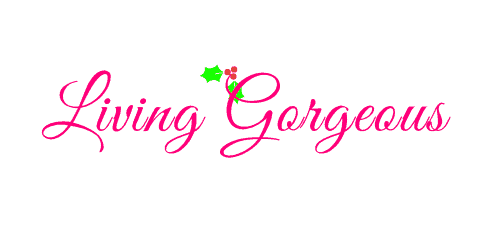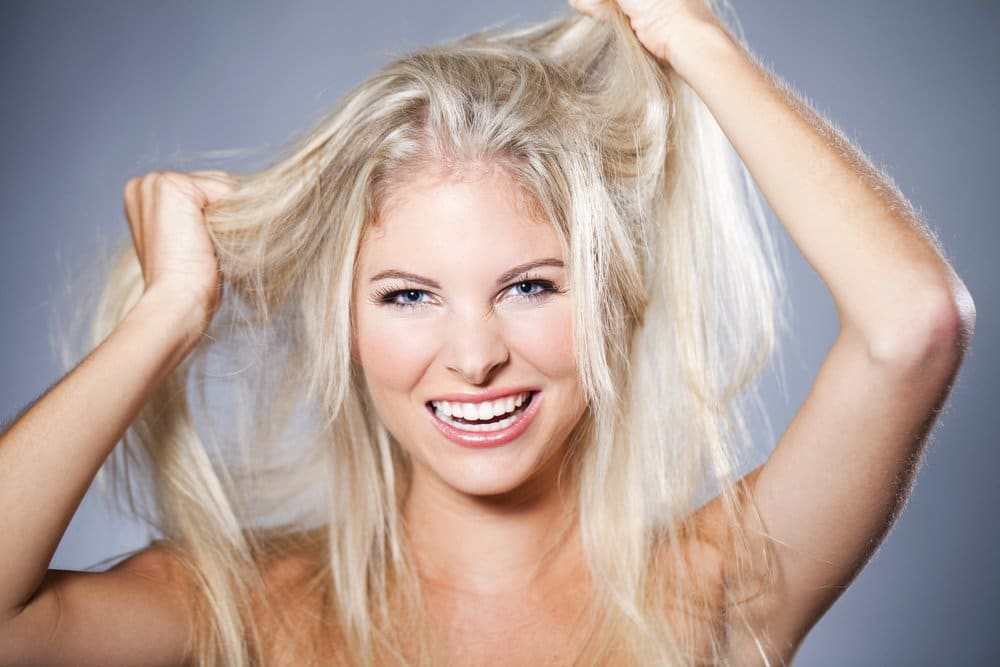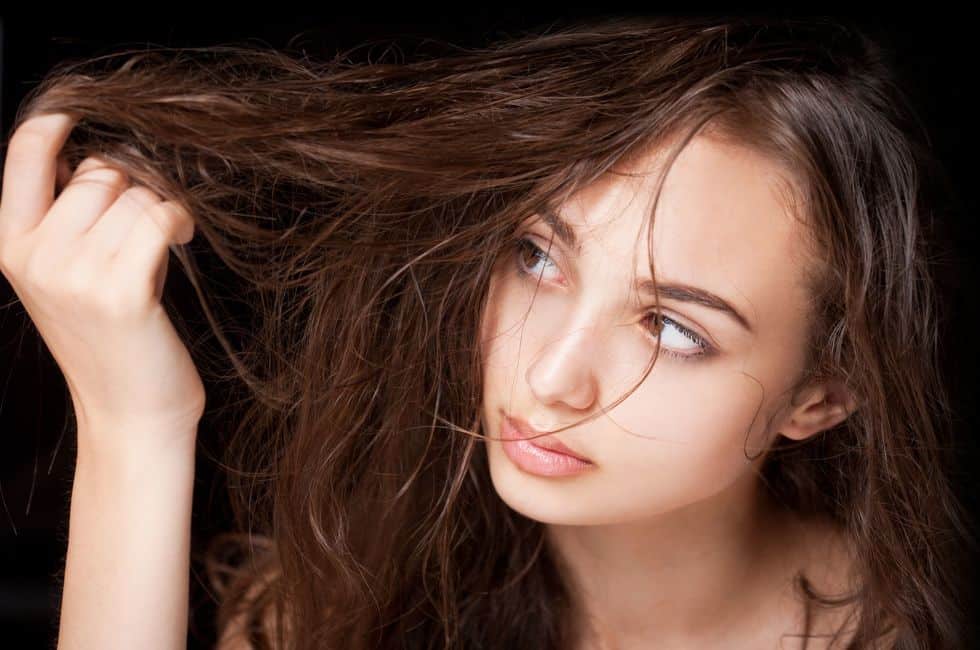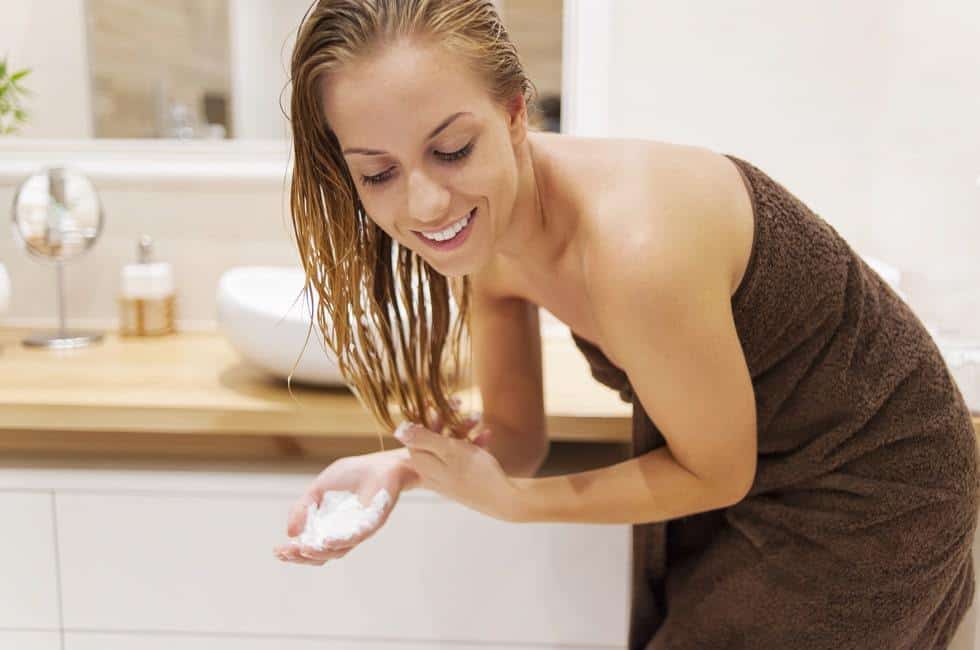If you’re reading this, you’ve probably bleached your hair and ended up with a hair that makes you vomit every time you look in the mirror. Been there, done that a couple of thousand times so far.
That’s why I can help you restore your hair.
Today, I will share everything I know about bleaching and damaged hair restoration. Follow my tips on how to fix damaged hair and apply some of the solutions I will provide throughout this article.
I promise that you will look like those models from shampoo commercials in record time. However, first, let’s learn something more about bleaching and techniques on how to fix your bleached hair.
How do you fix dry bleached hair?
First and foremost, bleaching is a process of removing the melanin in your hair with chemicals in order to lighten your hair. You can lighten your hair with bleach which contains hydrogen peroxide, ammonia, and alkaline.
They cause your hair to swell and opens up the cuticles. When this happens, your hair loses its protective layer, leaving your hair weak and prone to damage like breakage, split ends, and dryness.
However, when this happens, there is no need to panic because it’s a fixable issue. You can still fix your hair by doing an easy trick known as “hydrating”. If you wonder what hydrating is, keep on reading.
How do I rehydrate my hair after bleaching it?
Hydrating represents the process of fixing hair from bleaching from the inside.
It is performed with products made of humectants – substances that increase moisture. The amino acids and proteins in the humectants turn the hair more porous in order to absorb more nutrients and repair a lot faster.
Most people mistake moisturizing with hydrating. However, it’s not the same process.
Hydrating repairs your hair from the inside, while moisturizing repairs strands and fixes your hair from the outside. In fact, moisturizing seals in moisture by coating the outside of the hair with butter, extracts, oils, and serums.
Moisturizing and hydrating go hand in hand, but they are not the same. Today, I will focus on hydrating and teach you how to rehydrate your hair after bleaching it. First, let’s review the benefits of hydrating.
- It cleans your scalp thoroughly, removing grime, dirt, and oil
- It unclogs pores on your scalp and face, reducing pimples, acne, and other skin flaws
- It removes dead skin cells and deals with dandruff
- It strengthens the strands, turning them resistant to split ends and breakage
- It nourishes your hair’s roots, reducing the appearance of baldness
- It makes your hair thicker, restoring integrity, volume, and shine
- It reduces frizz, tangles, and static, making your hair more manageable
Bleaching is a harsh and annoying process that reduces the melanin in your hair with harsh chemicals. Meaning, the moment you’re finished with bleaching, you need to start treating it.
However, if you are going blonde, you need to know your hair products. Check the ingredients in hair products that you buy. Make sure that they do not contain harsh ingredients like chlorine, formaldehyde, mineral oil or sulfate.
First and foremost, you need to buy a conditioner. As you already suppose, bleaching is a dehydrating process, so you will need to use a deep conditioner to boost hydration.
A deep conditioner is considered as a hair food because it has minerals and vitamins necessary for hair shine, growth, repair, and luster.
When using a deep conditioner, apply from root to tip and massage it into your scalp. Use a shower cap to cover your head. Use your hairdryer on low heat to boost the performance of your deep conditioner.
Read the instructions on the packaging in order to check for how long the product should soak before you rinse off with mild water.
Alternatively, if you do not want to use chemicals for repairing chemical damage, purchase or make your own deep conditioner applying natural ingredients from your kitchen.
You can add natural oils, certain foodstuffs, extracts, butter and so on.
I will share a few natural deep conditioner recipes later in my article, so stick till the end. I suppose that you wonder if you should use shampoo after bleaching. I suggest that you do NOT use the shampoo that you used from before.
Most shampoos contain chemicals that remove your hair’s natural oils. This can cause more damage to your hair, instead of fixing it. But do not panic. There is a solution to this. It is called “purple shampoo”.
This type of shampoo is effective for volumizing, moisturizing, cleansing and hydrating. It also helps you correct your hair tone by removing the yellow tone, so your bleached hair does not appear like a straw.
Other hydrating products you can use after bleaching is rosehip oil, jojoba oil, shea oil, olive oil, argan or coconut oil.
They can hydrate hair, tame frizz and bring back the natural shine. The best part? They’re organic, so you do not have to worry about harsh chemicals that can cause further damage to your hair.
I personally used olive oil the first time I bleached my hair and coconut oil the second time I caused my hair to hate me. Each oil is easy and simple to apply.
Apply the oil you choose to your hair, starting from root to tip. Repeat the process after showering daily. Another effective hydrating product is a serum.
Serums are created of a high-concentration combination of glycolic acids, vitamins, and antioxidants. They fix the underlying layer of skin, scalp, and strands. Serums apply a coating that protects your hair from sweat, dirt, grime, and heat.
Hair serums can be used on the days that you wash your hair. If you plan on using a hair serum, after washing, apply 2 – 3 drops from root to tip and massage into scalp.
Last but not least, heat protectant can repair and rehydrate your bleached hair.
It protects the hair from heated styling tools. Heat protectant is a combination of natural oils, minerals, and vitamins. It is created for thermal damage prevention. Apply heat resistant after washing, before you use any heat styling tool.
Extra tip: Have you ever heard of hair sunscreen?
Allegedly, hair sunscreen can protect your hair from harmful UV rays but rehydrate as well. It applies a protective layer and locks in the moisture from other hair products.
Applying a hair sunscreen before going out during the day should be a must if you want to repair your hair after bleaching. You can also try coconut water if you spend most of your hours outside.
It acts as a natural hydrating cleanser and provides protection against the sunlight, reduces dandruff and tames frizzy hair. Just insert coconut water in spray water and spritz 2 – 3 times per day for protection.
How do you keep your hair healthy after bleaching it?
If you have a badly damaged hair, every tip and advice helps.
Taking care of your hair after bleaching is the only way that you can restore the moisture. Avoid hairdryer, heat styling tools and do not apply extra damage to your bleached hair. Pat your hair dry with a clean towel instead.
Also, never brush your hair when wet because wet hair is more prone to breaking and damage than dry hair. Heat is not good for the hair, especially after bleaching.
However, this does not apply to heat styling tools and sunlight only but water too. Instead of washing your hair with hot water, go with lukewarm or cold.
You need to pay attention to your comb as well. Use a wide-toothed comb or paddle hairbrush if your hair is prone to breakage. Make sure that it has soft bristles. Begin brushing from the bottom and work your way up.
Another useful tip is to reduce the washing. Limit your washing to maximum 3 times per week.
How to make bleached hair soft and silky?
The process of making your hair soft and silky after bleaching should start before the bleaching.
So, the next time you bleach your hair, keep in mind that applying protective formulas before the process, will protect your hair from harsh chemicals as much as possible. However, you cannot do this on your own.
Ask your hairdresser for heat protective solution before bleaching. These protective formulas are mixed with bleaching products. After, a different solution is applied after washing and conditioning your hair.
Next way to make bleached hair soft and silky is getting a Keratin treatment. This is one of the popular solutions for damaged hair used by professional hairstylists.
It adds keratin back to your hair. First, they apply a serum to your hair. After, they infuse the serum into your hair with a flat iron. A Keratin solution lasts between 1 – 2 months, depending on how frequently you wash your hair.
Third and last way to make your hair soft after bleaching is asking your hairdresser for custom-blended treatment.
These treatments are based on the hair’s needs and will make your hair look shiny and fresh again, allowing you to continue with your regular hair habits in the meantime.
How to hydrate hair after bleaching naturally?
I already mentioned a natural way to hydrate your hair– oils. Now, as promised at the beginning of this article, I will share a few ways on how to apply oils and goodies that will hydrate bleached hair naturally.
Avocado oil
Mix one ripe avocado with an egg yolk. Apply the mask to wet hair. Massage the scalp for a few minutes. Leave it on for about 20 minutes before you rinse with warm water.
This homemade mash is perfect for bleached hair desperate for deep conditioning. Apply twice per week and you will notice improvements.
Mayonnaise
The mayonnaise treatment for damaged bleached hair is quite popular. Although it seems disgusting to imagine, applying on mayonnaise on your hair has many benefits.
Mayonnaise is rich in amino acids and oils that condition the hair effectively and naturally.
Applying a small amount of mayonnaise to wet hair can do wonders for your bleached hair. Just apply as you would normally apply your regular conditioner.
After, put on a shower cap to lock in the heat and leave it on for about 10 minutes. After washing it off, you will notice an immediate improvement. Your hair will feel lighter and appear shinier and healthier.
Butter
Massaging your scalp with butter can do wonders for your bleached hair. Apply a small amount on your scalp and start massaging for a couple of minutes.
Put on a shower cap to lock in the heat and leave it on for 30 minutes. Rinse off and shampoo your hair. You will notice an immediate improvement in shine.
Homemade shampoo
Cracking an egg into your shampoo can condition your hair like no other conditioner on the market. Did you know that eggs have been considered a proven remedy for damaged hair since the 11th century?
It’s so because the yolk is rich in protein – something bleached hair lacks. Also, eggs contain lecithin that works for deep moisture. After two weeks of using this mix, you will notice a difference in your hair’s moisture.
Bananas
Bananas are rich in proteins, vitamins, and fiber which is why they are the perfect remedy for bleached hair.
Mixing a ripe banana with yogurt, castor oil and honey will bring back the balance and moisture in your hair. Do not apply this mask to your roots. Leave it on for about 30 minutes before you wash it off.
Coconut oil
Saving the best for last and my personal favorite, coconut oil is perfect for bleached hair. I apply this oil on my hair even when it looks healthy because I am aware of the many benefits coconut oil comes with.
According to a study, coconut oil prevents protein loss. Protein loss is one of the main reasons why your hair looks dry and dull. It prevents breakage as a result of combing and enriches your hair with vitamins.
Final thoughts
I believe that my bad experience with bleach and repairing my damaged hair for thousands of times so far has made me an expert on hydrating.
That’s why I wanted to write this and inform you of ways you can use to hydrate your hair after bleaching. I would suggest that you choose some of the natural ways.




Shirin
Sunday 2nd of May 2021
Hello! Thank you for these interesting tips. Could you please clarify whether these natural masks should be applied before or after the shampoo and conditioner. Many thanks!